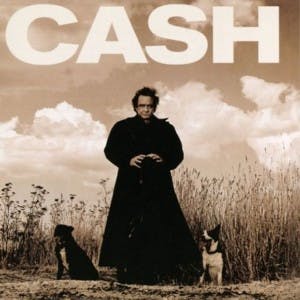5 More Meaningful Sales Metrics
Matthew Bellows
In every business that lasts, the most important metric for measuring the sales team is, naturally, sales. How much money did we exchange products for? Whether it’s measured daily, weekly, quarterly, or annually, top-line revenue growth is the single most important measure of organizational health.
There are, however, five additional metrics that are worth tracking as well. These are signposts that indicate how you and your team are doing. They can be early warning signs that something needs to change. Or they can measure other aspects of your company’s life.
But tread carefully. Complexity is the enemy of efficiency. For every new metric you introduce, you and your team will spend significant time tracking, reporting and considering the meaning of what was measured. Before you adopt any of these or other additional measurements, estimate the investment and be willing to spend double. Then go forward and reap the benefits
1. Touches
How many times did each salesperson contact each prospect and/or each customer?* There are several reasons to count Touches. You can figure out the optimum number of Touches per customer type, so you don’t waste time chasing deals unlikely to close. Hubspot has done great work quantifying this [link]. You can make sure that you are Touching the right customers enough. Without counting Touches, the squeaky customer wheel will absolutely get the grease, no matter how unprofitable they are. And counting Touches is a great way to compare salespeople. Missing a revenue target is more understandable if the number of Touches is high– bad streaks happen to everyone. But there is no excuse for low Touches.
Please note, I’m not talking about calls made, voicemails left, emails sent, or meetings scheduled. Those are measures of speed dialing and spamming, not sales skills. Touches are successful contacts made or conversations had with a customer or prospect. You must have effective and cost-efficient systems in place to measure phone, email and in-person touches before putting this metric on your team.
2. Time-To-Close
Otherwise known as Speed or Sales-Cycle-Time, this metric measures the various days/weeks/months that it takes a salesperson to close each deal. The importance of this metric is easy to see, although the desired result is company-specific. In some companies, a salesperson who closes a $200k deal every month is preferred over someone who takes twelve months to close a $2.4m contract. But not if each sale requires custom development and significant deployment effort.
No matter which your company prefers, Time-To-Close can be a helpful measure for sales to track. As with a number of Touches, you can use Time-To-Close as a way to eliminate trash from the sales funnel. If the opportunity is over a year old, it’s unlikely to close. For your company, that year might be as short as a month. Time-To-Close is also a good measure to compare salespeople.
3. Time-To-Respond
This metric is tougher to measure reliably because it’s more granular, but it can be very effective at predicting customer success. A recent study showed that prospects were X times more likely to buy from a company’s website if they received a contact within 10 minutes of visiting [link]. Similarly, after the salesperson has established interest, quick response time to a prospect’s questions, objections and proposals can mean the difference. It’s easy to see why – in the mind of the buyer, fast response in the sales process signals an eagerness to support the partnership in the long term. In cases where products are close substitutes, quicker response time is a strong advantage.
4. Customer Response
Many companies track calls made or emails sent. In most companies, moving prospects down in the pipeline (and therefore assigning them a higher likelihood to buy) is tied to a salesperson’s activity. For example, you’ve sent the prospect a proposal – now you can move them from a 10% to a 25% likely to close. That approach is senseless in a number of ways, but the most obvious one is this – SENDING THE PROPOSAL DOESN’T MATTER. The customer accepting the proposal, reading the proposal, marking up the proposal, and returning the proposal… those things all matter.
There’s not enough space in this article to discuss this idea in depth. There’s another blog post on that. Let me simply propose: we stop measuring pipeline stages as activities of a sales team, and start measuring them as activities of our prospects and customers.

5. Time-to-Cash
All other things being equal, the customer who pays fastest is best. This metric combines a salesperson’s ability to negotiate quick payment terms, and their skill in choosing customers to pursue and close. In some companies, where prices and discount schedules are fixed, how fast the customer pays is second only to volume for influencing the salesperson’s compensation.
Wrap Up
It’s worth mentioning that although these metrics are usually tied in to compensation, they don’t need to be. It’s tough to know how accurately you’ll be able to measure these, and even tougher to know what the desired numbers should be. People tend to pay attention to what is tracked whether or not it figures into their paycheck – oftentimes public recognition and shared goals are more powerful motivators than compensation anyway. And tying a bundle of sales metrics together increases the opportunity for gaming the system – a considerable waste of sales brainpower.
But even if it’s not tied to compensation, and even without explicit goals in the first year or two of the program, introducing one or more of these sales metrics (and eliminating ones that are driving unproductive or deceitful behavior) can generate outsided benefits for your company.
* Note: For simplicity sake, I’m combining sales hunters (new customers) and sales gatherers (repeat customers) all in the sales group. Same with inside and outside sales.
** This article first appeared in an edited form in 1to1media.com
Get sales tips and strategies delivered straight to your inbox.
Yesware will help you generate more sales right from your inbox. Try our Outlook add-on or Gmail Chrome extension for free, forever!
Related Articles
Romy Ribitzky
Matthew Bellows
Matthew Bellows
Sales, deal management, and communication tips for your inbox


